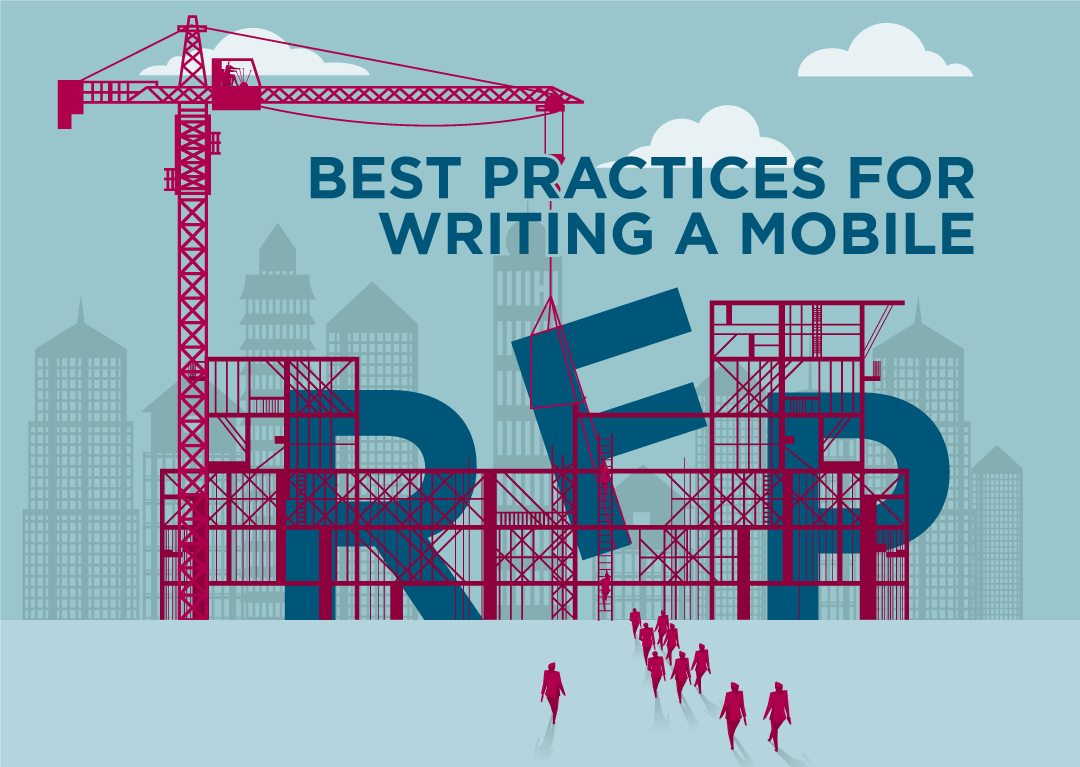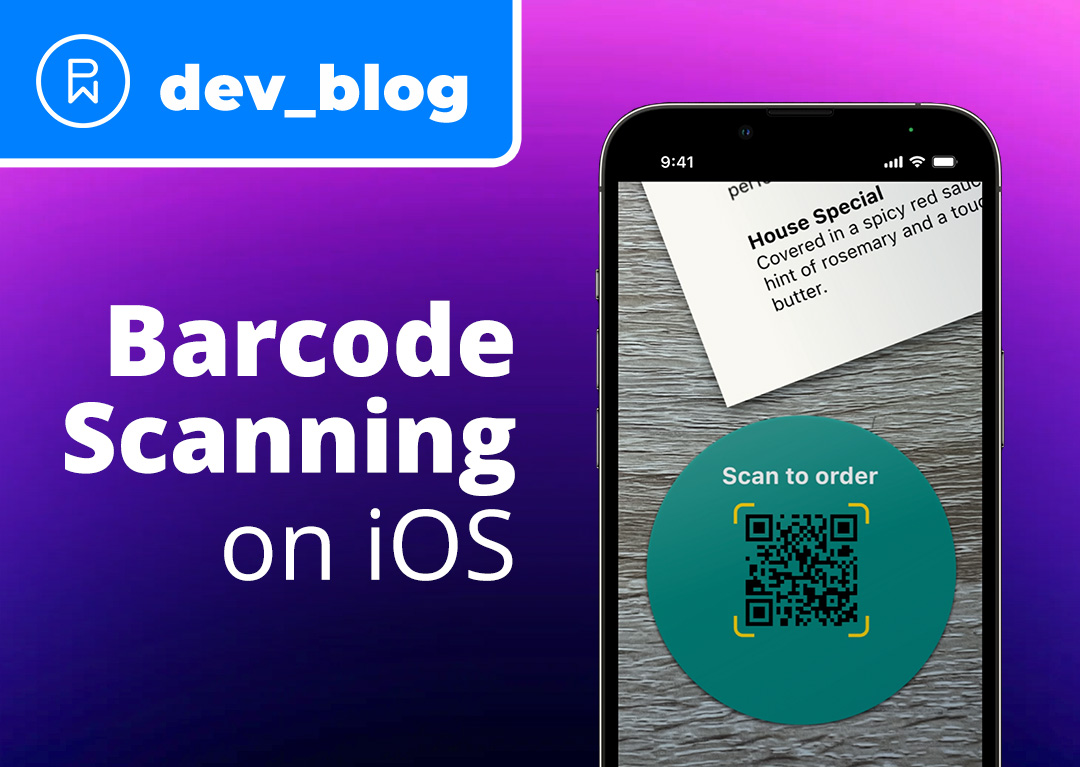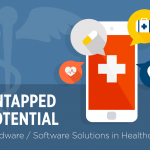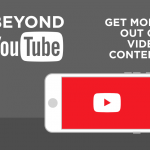Requests for proposal (RFPs) are an important part of any major custom mobile initiative. It’s common for large or complex businesses to use RFPs to solicit mobile solution ideas and strategies, particularly if they have a physical venue with which the application is supposed to interact (stadium, hospital, port, mixed-use city center, etc.).
Businesses don’t ask for proposals for point solutions or products they can buy off the shelf. By their nature, RFPs are strategic—they’re for finding custom, long-term solutions that fit in with the soliciting company’s larger vision and goals. If you’re structuring an RFP, do it thoughtfully and carefully. The requirements you put forth can significantly impact the quality of the mobile solution (and partner) you end up with.
I have already discussed the importance of understanding mobile as an iterative cycle and suggested ways to structure your org and team for success across that cycle. Given that branded mobile application portfolios tailored to richly defined mobile application experiences have the power to drive enterprise-wide digital transformation, let’s discuss how your procurement group can structure RFPs to facilitate that transformation.
If you plan for the full mobile lifecycle at the RFP stage, you will be able to find a mobile partner who doesn’t just build your app, but can help you acquire, engage and monetize your mobile audience in line with your business goals.
Mobile RFP Requirements for the “Strategize” Phase
In the mobile application lifecycle, the “Strategize” phase involves defining the amazing experience you want users to have with your app, then outlining use cases and feature sets.
If your project is complex enough to necessitate an RFP, it’s important to select a partner with proven success in similar, equally complex projects.
To uncover indicators of a bidder’s experience and capabilities, ask for examples of:
- Custom flagship applications / application portfolios for known brands. This demonstrates credibility, along with creative and technical expertise.
- Live event applications supporting live-streaming video and other real-time content. This demonstrates that the bidder has robust, stable technology and the ability to integrate with third-party providers.
- Successful in-venue mobile experiences at stadiums, hospitals, etc. This demonstrates the technical capabilities required to integrate with a host of hardware providers to create a seamless, engaging mobile user experience. Bidders should be prepared to support location technologies including high- and low-density Wi-Fi and both physical and virtual beacons.
You will also want to define functionality and feature set requirements in this part of your mobile RFP. As applicable, request the following:
- Simple app content management
- Context-triggered user engagement via push notifications and mobile engagement
- Indoor wayfinding and navigation
- Video streaming
- Campaign and app analytics
- The flexibility to integrate with multiple third-party software providers (such as customer relationship management [CRM] platforms, electronic health record [EHR] systems, loyalty, commerce, etc.)
Mobile RFP Requirements for the “Create” Phase
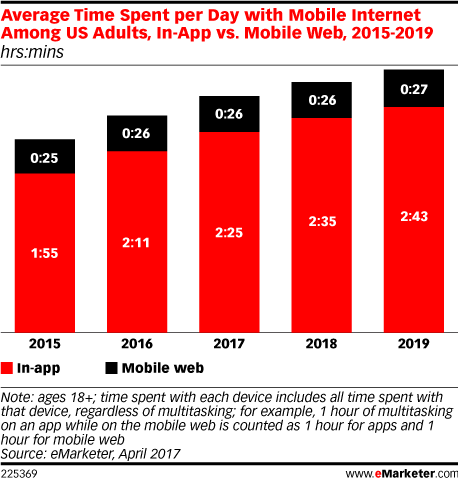 During the “Create” phase of the mobile application lifecycle, you bring your app to life in the way that makes the most sense for your budget, timeline and in-house capabilities. Depending on your unique timeline and goals, you can expect a mobile solution to cost anywhere from $100K to $500K (if you’re licensing software), or $1M to $5M (if you’re building a completely custom application).
During the “Create” phase of the mobile application lifecycle, you bring your app to life in the way that makes the most sense for your budget, timeline and in-house capabilities. Depending on your unique timeline and goals, you can expect a mobile solution to cost anywhere from $100K to $500K (if you’re licensing software), or $1M to $5M (if you’re building a completely custom application).
If these numbers seem high, think about how much you allocate to other channels (email marketing, field marketing, etc.). Now think about how much time your target customers spend in those channels relative to how much time they spend on mobile. This simple exercise in perspective will help you see how worthy of an investment you’re making.
A word to the wise: avoid the temptation to go with the cheapest technology option, which may come disguised as a so-called “write once, run anywhere” codebase. Non-native development is a shortsighted non-solution to a very real problem, and bidders who propose HTML-based or other non-native development will not be equipped to support you through the mobile lifecycle. Look for a bidder who proposes a native mobile solution, built to the design standards of each platform and leveraging the uniquely mobile capabilities of each operating system and device. (Here are those design standards, if you’re interested: Apple Human Interface Guidelines, tvOS Human Interface Guidelines, Google Material Design, Android TV Guidelines.)
Mobile RFP Requirements for the “Launch” Phase
During the “Launch” phase of the mobile app lifecycle, you work to get your app noticed and build the audience that will use it. This requires a partner with robust performance marketing and data science capabilities. Make sure that your RFP requests detailed information on how the bidder will support app discovery and user acquisition, backed by real-world examples of launch and audience building success with other apps.
Also make sure to request a thorough explanation of the bidder’s customer support approach during and after the launch period. The more complex the project, the more support you should expect and request.
Mobile RFP Requirements for the “Engage and Monetize” Phase
In the “Engage and Monetize” phase of the mobile application lifecycle, you map out how you intend to keep app users engaged and drive revenue through your mobile efforts. There are many options—from a simple download charge or subscription model for your app to in-app purchases, in-app advertising, driving sales and foot traffic via contextually relevant messaging and more. And all of it generates troves of valuable data that you’d be foolish not to leverage.
To identify a prospective partner who can appropriately support this phase, your mobile RFP should ask that bidders describe their background in supporting:
- In-app monetization with various ad formats as well and a top-quality network (if relevant)
- In-app purchases and loyalty program integrations
- SMS-based marketing campaign planning and execution, as well as the features and capabilities of any contextual marketing tools offered
- Leveraging contextual data to impact marketing, operations and other business-critical initiatives
As you can see, the earlier you start planning for all phases of your mobile application lifecycle—particularly by addressing them up front in your RFP—you not only streamline the process, but increase your chances of driving real returns on your mobile investment.
I hope you’ve enjoyed this series on how to position your organization for success across the mobile application lifecycle—in essence, get your head right, get your team right and get your RFP right so you can find the right mobile partner. The mobile space is inherently partner-driven and collaborative, but there’s nothing worse than being stuck with a mobile provider who can’t (or won’t) act as a strategic partner.
For more tips and insights, feel free to get in touch. In the meantime, why not learn about the ins and outs of the mobile app lifecycle? Download our eBook on the subject below.


